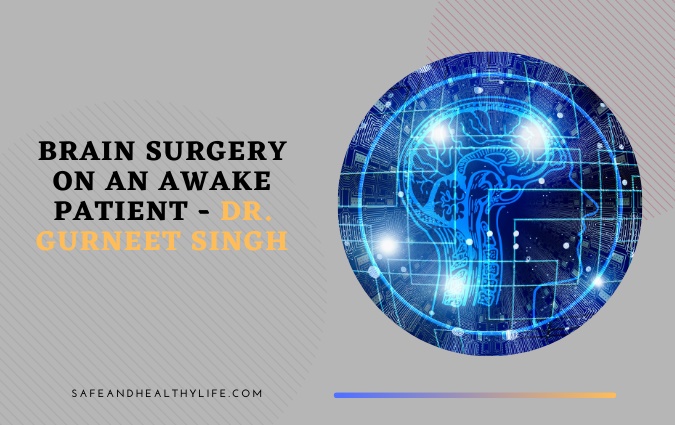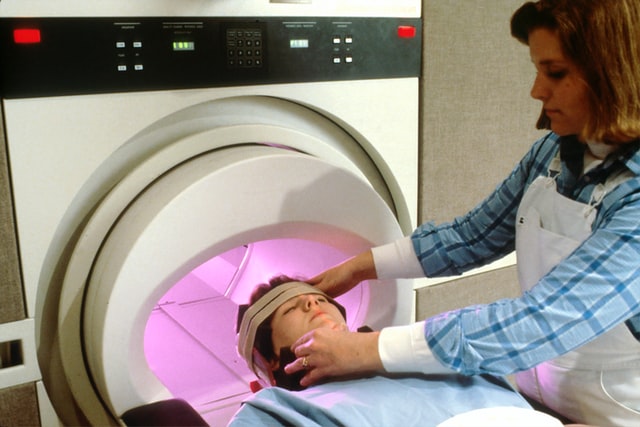
Dr. Gurneet Singh Sawhney is a Mumbai-based neurosurgeon who is both youthful and experienced. Brain tumor surgery, epilepsy surgery, vascular neurosurgery, pediatric neurosurgery, spine surgery, epilepsy surgery, and other procedures are among the procedures he does.
He is an expert at performing complex functional neurosurgeries such as Deep Brain Stimulation Surgery (DBS), Parkinson’s Treatment, and Spinal Cord Stimulation. All of these are done while the patient is conscious.
He may be consulted at Mumbai’s Fortis Hospital, Fortis Hiranandani Vashi, and Savla Diagnostic Center and Polyclinic, Chembur in Mumbai.
About the process:
The ability to execute a brain tumor removal surgery while the patient is awake and responding to questions from the operating medical team has been made possible because of advances in surgical technology. Awake craniotomy is a highly advanced procedure that necessitates extreme precision to achieve the best results.
A craniotomy is a surgical procedure that exposes the brain by removing a portion of the skull’s bone. The bone flap, which is a portion of bone, is removed with specialized equipment. After the brain surgery, the bone flap is temporarily removed and then reinstalled.
Awake Craniotomy is becoming more common around the world. Indian neurosurgeons also perform such surgeries, so we can match the medical standards and infrastructure that the western healthcare system provides.
The ability to execute a brain tumor removal surgery while the patient is awake and responding to questions from the operating medical team has been made possible because of advances in surgical technology.
Awake Craniotomy is a highly advanced procedure that necessitates extreme precision to achieve the best results.
About the patient’s journey:

Photo Credit: Unsplash
Mr. Ravindra went to Dr. Gurneet Singh Sawhney for help with focal seizures and speech problems. An MRI brain scan revealed a big left frontal tumor in the speech area after additional diagnosis and examination.
Dr. Gurneet Singh Sawhney recommended a functional MRI to get a more detailed picture of the tumor. According to the report, the cancer was found to be firmly placed in the speech area, a key and high-risk position. In the event of a minor mistake during the surgery, there was a high risk of the patient’s speech being harmed.
Dr. Gurneet Singh Sawhney felt confident in his ability to remove the tumor through a craniotomy, but the patient’s speech was at risk. As a result, he chose to perform an awake craniotomy.
‘Performing an awake craniotomy was the best conceivable way to remove the frontal tumor,’ says Dr. Gurneet Singh Sawhney. Through cortical mapping, we were able to pinpoint the speech region of the brain. Fortunately, we were able to remove the tumor altogether.’
To remove malignancies that originate near critical brain regions or have functional significance, awake Craniotomy is favored over traditional operations. During surgery, the surgical team can assess these areas and guarantee their functionality. The risk of injuring the eloquent part of the brain is reduced with an awake craniotomy, and the tumor is safely removed.
Mr. Ravindra was informed about the awake craniotomy process by Dr. Gurneet and his staff, who requested his full cooperation and promised him the best possible outcome.
Mr. Ravindra was told to say particular phrases, count numbers, and even verbally identify specific images displayed to him during the operation by Dr. Gurneet Singh. They realized they had reached the speech section of the brain when Mr. Ravindra did not react to the queries asked by the operating team throughout the ongoing surgery.
While the patient was speaking, particular regions of the brain were activated during the surgery. If there was a speech pause after stimulation, the area was labeled as critical and left alone.
Dr. Gurneet Singh Sawhney and his team were able to altogether remove the tumor without causing any damage to the speech center of the brain. Dr. Gurneet was pleased with the awake Craniotomy results.
Mr. Ravindra, the patient, made a full recovery and was discharged three days later. Mr. Ravindra is a happy man who tells everyone he meets about his successful awake craniotomy procedure.
About The Author:
Aditi Nair is a passionate health blogger. She enjoys writing about all of the health-related issues that affect various parts of the body and addressing her readers about the care that needs to be taken in today’s world.




![[Infographic] Healthy Activities For An Aging Brain Healthy Activities For An Aging Brain](https://www.safeandhealthylife.com/wp-content/uploads/2023/10/Healthy-Activities-For-An-Aging-Brain-1-150x150.webp)